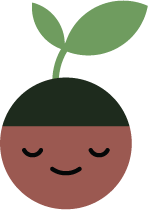Gardening for Transparency
Our modern lives are surrounded by opacity. This opacity is very appropriate most of the time, as we can move fluidly through our days without first requiring total understanding about the products and services we use. If you just want to read an article online, such as this one, It is not necessary that you first understand how the bits of information you are reading got to be sitting in front of your eyeballs on your own computer, when they started somewhere else. There is simply too much to understand, and too much to learn in every field to be knowledgable in everything. The solution is therefore, selective opacity. Most people choose to have knowledge about a range of limited topics, but defer to experts on other matters.
I think food, particularly the food that we eat, is an area where we should all be experts.
Despite its direct impact on our health and lives, food is a notable area of opacity. We know very little about how the food we eat is grown, and what route it took from the field to the supermarket. It is not unusual that the producers of food in these systems aren’t forthcoming with information about what truly goes into our food, and the system of transportation, food processing, and retail, helps keep their secrets.
The choices that face farmers are based on profit maximization. While not a bad thing as such, the lack of transparency makes these choices invisible to the very people who need to know about them most: consumers. If a farming operation can cut costs by $0.10 per unit with the application of a pesticide that will kill pesky aphids, that’s fine, but the consumer should also know about it.
Without consumer transparency, growers have an incentive to apply more and more synthesized fertilizers, pesticides, and herbicides, because all of these things improve profits. As a direct consequence, agricultural runoffs from the Mississippi into the Gulf of Mexico have caused an unprecedented algal bloom, destroying over 6,000 square miles of marine ecosystems.
In addition, separating the actual growers of our food from the consumers are many tiers of wholesale, processing, and retail middlemen. A farmer may sell food to a wholesaler, who may sell it to a supermarket where the consumer will buy it. With each tier, more information about what the product really is and where it came from is obscured.
Should we expect the organizations in whose interest it is to keep the doors shut to prioritize transparency? Probably not. Even if massive legislative efforts were enacted to require retailers to provide plainly-visible information about which growing methods were used, there are still enough ways for a team of clever lawyers or marketers to get around these roadblocks. Perhaps new greenwashed labeling like “bug-free” would be introduced, or perhaps producers would side step the laws entirely by ducking through a loophole.
What has happened to the organic label is a succinct demonstration of these tactics. Although not meaningless, food labeled as organic is not the same as food that came from a 2 acre family farm and that was grown by people who really care about what organic farming is. It is not the same as food grown with equal consideration about profit and the end consumer. It is not even the same as food grown without synthetic pesticides and herbicides. The organic label has been reworked to be as generous as possible to producers at the expense of consumers, many of whom still see the label as a golden stamp of pristine natural goodness.
A step in the right direction would be to buy food from farmers markets, but this food can be expensive. In addition, there’s no getting around the differences in incentives between the producer and the consumer. The producer will always be motivated to conceal, misrepresent, or downplay any unwholesome ways they chose to increase their yields. There are many who are fair and transparent about what they grow, but the system doesn’t make things easy for them to compete.
Becoming the producer of your own food is the antidote. Gardening vegetables is an expression of radical transparency. Instead of getting your food from someone who grew it thousands of miles away under unknown circumstances, you can grow it in your own back yard while controlling each of the inputs. You can make the choice of what pesticides and fertilizers, if any, to apply.
If you are new to gardening, start small. Perhaps begin with a low-maintenance herb garden, and consult the many excellent resources that are available online.
The level of care you will be able to invest into your plants will feel empowering, and watching your seedlings grow to maturity will give you a jolt of happiness every time you check in on their progress.
The final thrill will come when you sit down to enjoy the fruits of your labors, and you tell your fellow diners, “I know where this food came from”.
